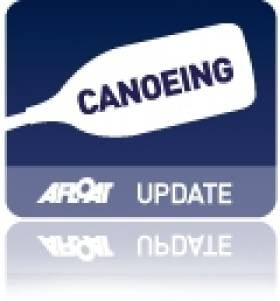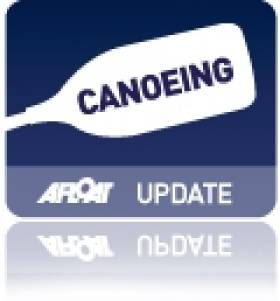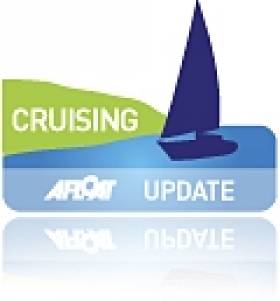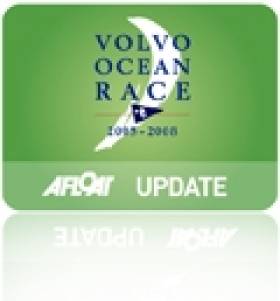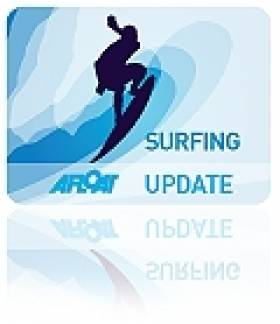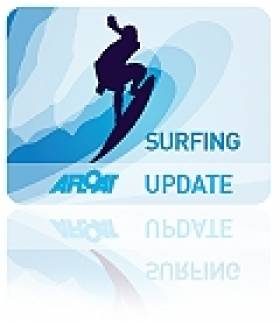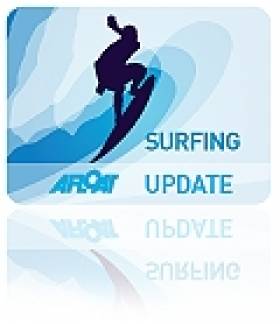Displaying items by tag: Portugal
Jezierski Competitive in European Canoe Sprint A Final
# EURO CANOE SPRINT: Ireland’s Andrzej Jezierski finished sixth in the A Final of the C1 (Canadian Canoe) 200 metres at the European Canoe Sprint Championships in Portugal. The Polish-born athlete was among the leaders early on, but was reeled in during the middle stages of the race, which was won by Jevgeni Shuklin of Lithuania. Jezierski was .955 of a second behind.
Earlier, Barry Watkins finished seventh in the men’s K1 (racing kayak) 500 metres. Watkins had also reached the A Final of the K1 1000m, where he finished eighth. Pat O’Leary, Ireland’s first paracanoeist to take part in an international championships, also made the A Final of the men’s K1 200m, finishing ninth.
Jenny Egan finished fifth in the women's K1 5,000 metres.
European Canoe Sprint and Paracanoe Championships (Irish interest; selected results)
Saturday
Men
K1 1000m – A Final: 8 B Watkins 3:33.420.
C1 200m – Heat One: 2 A Jezierski 41.594.
Paracanoe – K1 200m - A Final: 9 P O'Leary.
Women
K1 200m – Heat One: 9 J Egan 47.429
Sunday
Men
K1 500m – A Final: 7 B Watkins 1:44.421
C1 200m – A Final: 6 A Jezierski 42.631 seconds
Women
K1 5000 - Final: 5 J Egan 23:13.753
# EURO CANOE SPRINT: On his first outing at the European Canoe Sprint Championships in Portugal, Ireland’s Andrzej Jezierski finished second in his heat of the C1 200, just eight hundredths of a second off the top spot. Jezierski goes directly through to tomorrow's A Final.
Barry Watkins finished eighth in the A Final of the K1 1000.
European Canoe Sprint Championships (Irish interest)
Men
K1 1000 – A Final: 8 B Watkins 3:33.420.
C1 200 – Heat One: 2 A Jezierski 41.594
Women
K1 200 – Heat One: J Egan 47.429
Shipwreck Highlights Danger of Portugal's Winter Winds
#Shipwreck - Two are reported dead after a shipwreck yesterday (Wednesday 10 April) on the Portuguese coast in what is a reminder to all cruisers of the dangers of strong winds in the region.
According to Portuguese language newspaper Publico, the deceased include one of the five crew of the German-flagged cruiser Meri Tuuli, and a member of the Portuguese maritime police attending to the incident who went into the water when his RIB overturned.
Eight people in total were admitted to hospital after the incident in which the Meri Tuuli - an X-442 yacht perated by a local sailing school - capsized on Cabedelo beach in Figueira da Foz, near Oporto.
Two are reported to be "wounded with traumatic injuries" while another two showed symptoms of hypothermia after exposure to the water.
Figueira da Foz is a popular cruising destination along the Iberian coast, but its port is vulnerable to the high swells that attract surfers to the area, sometimes closing altogether.
A source close to Afloat.ie described most harbour entrances along Portugal's west coast as "lethal during of after strong winter south or southwest winds" which are made stronger as air rushes into the valleys at river mouths as sea breezes.
Lisbon Added to VOR Race Route for 2014-15
#VOR - Lisbon will again feature in the Volvo Ocean Race route after striking a two-race deal with organisers.
The Portuguese capital - which made its VOR debut in last year's edition of the race, hosting the start of the penultimate leg - will again welcome the VOR fleet in 2015 after the North Atlantic crossing leg from Newport in Rhode Island, and will repeat the celebrations in 2018.
"What Lisbon achieved in the last race was remarkable when you think that the city was making its debut," said VOR COO Tom Touber.
Lisbon is the eighth host port to be announced for the 12th edition of the round-the-world yacht challenge, following the return of Abu Dhabi to the calendar a few weeks ago.
Surf Record Breaker Garrett McNamara Rides '100ft Wave'
#Surfing - Garrett McNamara has done it again - after riding what is claimed to be the largest wave ever surfed.
Last summer on Afloat.ie we reported that the Irish-American surfing pro had his previous world record attempt - a 78-foot monster off Portugal in November 2011 - confirmed by Guinness record-keepers.
But the Hawaiian wasn't content to rest on his laurels, and on a recent return visit to Nazaré he is said to have smashed his own record with a wave reported to be as much as 100ft in height.
The Guardian has video of McNamara's incredible attempt which you can view below - it's a sight that beggars belief!
McNamara's previous tow-in surf at Nazaré earned him the Biggest Wave title at the 2012 Billabong XXL Big Wave Awards. He shared his $15,000 prize money with Devon surfer Andrew 'Cotty' Cotton, who towed him by personal watercraft into the massive swell.
"Everything was perfect, the weather, the waves," said Northern Irish surfer Al Mennie, who was on hand to witness the pair at Praia do Norte.
#MARINE RESOURCES - The first event of the Atlantic Forum to inform the EU Strategy for the Atlantic (EUSA) will be held on Faial Island in Portugal's Azores on Friday 21 September.
The inaugural meeting will be held under the them of 'Coastal and Deep Sea Natural Resources'.
According to the Marine Institute, the momentum of the Atlantic Strategy towards 'Blue Growth', enhancing growth and jobs, "will come through the development of marine renewable energies, new visions for aquaculture production, innovative scientific research, promotion of maritime culture and leisure in the Atlantic, including cruising and nautical sports, seabed mining and associated technologies, biotechnologies and greener shipping and an increase in short-sea shipping."
The aim of the Atlantic Forum is to ensure awareness of the EUSA and EU funding processes and to provide stakeholders with a platform to input to the EUSA Action Plan (2014-2020) which will guide the implementation of the EUSA.
The EUSA identifies a number of areas where there is scope for EU-level action to support the coastal and maritime economies of the member states along the Atlantic seaboard.
Interested participants can access further information on the Atlantic Forum, the Azores Meeting, as well as information on the subsequent Atlantic Fora meetings (Brest in October; Bilbao in November; Cardiff in February 2013; and Galway in March 2013) at the European Commission's Maritime Affairs website.
Irish Surfer Needs Funds to Attend Big Wave Awards
#SURFING - A young surfer from Lahinch in Co Clare is in the running for the 'biggest wave' prize in the 2012 Billabong XXL contest for his monster ride at Mullaghmore Head, The Irish Times reports.
Ollie O'Flaherty, 24, is nominated along with Devon's Andrew Cotton for the massive surf they caught off Co Sligo on 8 March last.
It was the first visit to the world-class big wave spot by O'Flaherty, a science student at NUI Galway who is a veteran of the Co Clare scene.
As previously reported on Afloat.ie, it was Cotton who tackled the biggest wave on that day - a giant 50-footer - as some of the world's top surfers took advantage of the Viking swell.
Also nominated for the $50,000 (€38,280) prize is Irish-American surfer Garrett McNamara, who last year rode what is being called the biggest wave ever surfed in the world, a 90-foot goliath off Nazaré in Portugal.
According to the Irish Independent, O'Flaherty has put out a call for sponsorship so he can attend the awards ceremony next month.
"It's a massive honor to be able to represent Ireland," he said, but added that he is "pretty much on the breadline from what I'm doing".
Should he win, the Lahinch native said he intends to "put every cent back into surfing" and replace his seven broken boards.
The winners will be announced at the Billabong XXL Big Wave Awards in Anaheim, California on 4 May.
Search Scaled Down for Missing Crewman in Irish Sea
#RESCUE - BBC News reports that the search for a cargo ship crewman missing in the Irish Sea has been scaled down.
The 22-year-old from Slovakia was reported missing yesterday morning from the Fehn Sirius, which was en route from Belfast to Portugal, as it headed past Arklow, Co Wicklow.
According to The Irish Times, he was last seen on the cargo ship around 10pm on Monday night as it headed south of the entrance to Strangford Lough.
Lifeboats from Portaferry and Newcastle in Northern Ireland and Arklow joined the search and rescue operation, which was assisted by the RAF helicopter based at Prestwick in Scotland and an Irish Coast Guard helicopter.
However, most rescue services have now been stood down as the Fehn Sirius continues to backtrack in the Irish Sea, with assistance from the Naval Service vessel LE Ciara.
Only three days ago the body of another mariner was recovered from the Irish Sea off the north Dublin coast, more than a month after he went missing.
Surfing Novices Welcome in the Sunny Algarve
#SURFING - Rachel Collins writes in The Irish Times recently of her experiences learning to surf in Portugal's sunny Algarve.
"Thousands of hardy souls follow the waves around the Irish coastline," she writes, "but for rookies sacrificing themselves to the sea, the warmth of the Algarve makes it the perfect place to learn."
The "friendly, welcoming atmosphere" at Lagos, near Faro - with direct daily flights from Dublin - will surely put any surfing beginner at ease, as well as making for "a welcome break from the cold Irish winter".
And with plenty of other activities on offer, from the nightlife, shopping, fine dining and relaxing sandy beaches to kitesurfing, wakeboarding, mountain biking and rock climbing, there's something for all interests.
The Irish Times has more on the story HERE.
Ireland to Showcase 'Planet's Biggest Waves' on 2012 Kite Surf Tour
#KITESURFING - Ireland will be one of four stops on the 2012 Kite Surf Pro World Championship Tour to decide the best wave kitesurfers in the world, Surfer Today reports.
Kicking off in Cascais, Portugal in June before heading to Mauritius in September, the tour will come to Ireland's west coast - described as "Europe's secret kite surfing jewel and home to one of the planet's biggest waves" - from 19-28 October.
According to Surfer Today: "Ireland's Kite Surf Pro will incorporate a unique mobile format, capable of showcasing each day's action at the choicest of locations on the country's wild and swell-abundant west coast."
The tour will wrap up in Maui, Hawaii from 29 November to 8 December, where the €15,000 prize purse wil be up for grabs at the famed surfing venue of Ho'okipa.
Surfer Today has more on the story HERE.



























